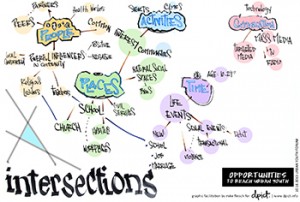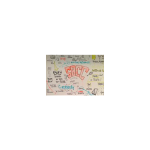Innovating through the Details for Urban Youth
 On October 16 in Washington, DC, HC3 hosted an evidence exchange forum on urban youth, sexual and reproductive health (SRH), and social behavior change communication (SBCC). The day sought to explore current programs in these areas, and identify gaps as well as trajectories forward. Concurrent with valuable exchanges between representatives from domestic and international SRH organizations, a key question hovered on the periphery, sometimes shifting into crisp focus: How do we, as program designers, researchers, mentors, and educators, access the mindset and true SRH situation of urban youths to make sure that our programs connect with them? We’re older, from different places and often backgrounds than the audiences we wish to target… So how can we bridge these gaps?
On October 16 in Washington, DC, HC3 hosted an evidence exchange forum on urban youth, sexual and reproductive health (SRH), and social behavior change communication (SBCC). The day sought to explore current programs in these areas, and identify gaps as well as trajectories forward. Concurrent with valuable exchanges between representatives from domestic and international SRH organizations, a key question hovered on the periphery, sometimes shifting into crisp focus: How do we, as program designers, researchers, mentors, and educators, access the mindset and true SRH situation of urban youths to make sure that our programs connect with them? We’re older, from different places and often backgrounds than the audiences we wish to target… So how can we bridge these gaps?
An immediate solution that comes to mind is youth talking to youth – peer educators! But a recent literature and program review performed by HC3 revealed that deploying youths as the primary mouthpiece for critical SRH information may put programs at a disadvantage. It sets high expectations on the young peer educator. How can a youth exploring their own sexual and reproductive context be expected to help shepherd others of their own age through this intricate time? It also makes the dangerous assumption that because a peer educator is the same age, s/he is of the same background as her/his target audience.
As highlighted in the October 16 forum by representatives from the NURHI and MLE projects, urban youth differ greatly not only between countries, but within cities themselves. Last, youth may not even want to receive SRH information from people their age. Multiple studies show that youths’ preferred channels of receiving SRH information included radio or television, or from individuals likely older than them in age, such as teachers, parents and medical experts.
This is not to say peer education isn’t without its merits, but it may work best when coupled with other methods. The HC3 Urban Youth SRH and SBCC Evidence Exchange Forum allowed representatives from myriad organizations to discuss how they’re approaching this problem differently. The Baltimore City Health Department, for example, noted Baltimore’s urban youth often spend idle time looking down – so to compliment their youth-led social media campaign for the family planning-focused Know What U Want program, they spray-chalked U choose logos on city sidewalks.
As social media and mobile phones take the world’s cities (and countrysides) by storm, Pathfinder looked to a youth-friendly scriptwriter to help adolescent-ize their Mozambique SRH narrative story SMS campaign, mCenas! (m[obile]Scenes!) with emoticons and youth slang that echoed the way adolescents communicate with each other over text. Trained peer educators help recruit youths to receive the episodic storyline texts, but the content delivery remains separate. Similarly, The Grassroot Project expands on the peer education approach by including slightly older “near peers” and Division 1 college athletes to broach HIV prevention conversations with DC youths through sports activities.
The feeling walking away from the October 16th forum was an encouraging one. Perhaps the more challenges we note in urban youth SRH SBCC programming, the more it shows we’re paying attention to the details – and that we will innovate together to respond to them.
Behavior Change Interventions Targeting Urban Youths
Determinants of Adolescent Sexual and Reproductive Health in Urban Settings






Leave a Reply
Want to join the discussion?Feel free to contribute!